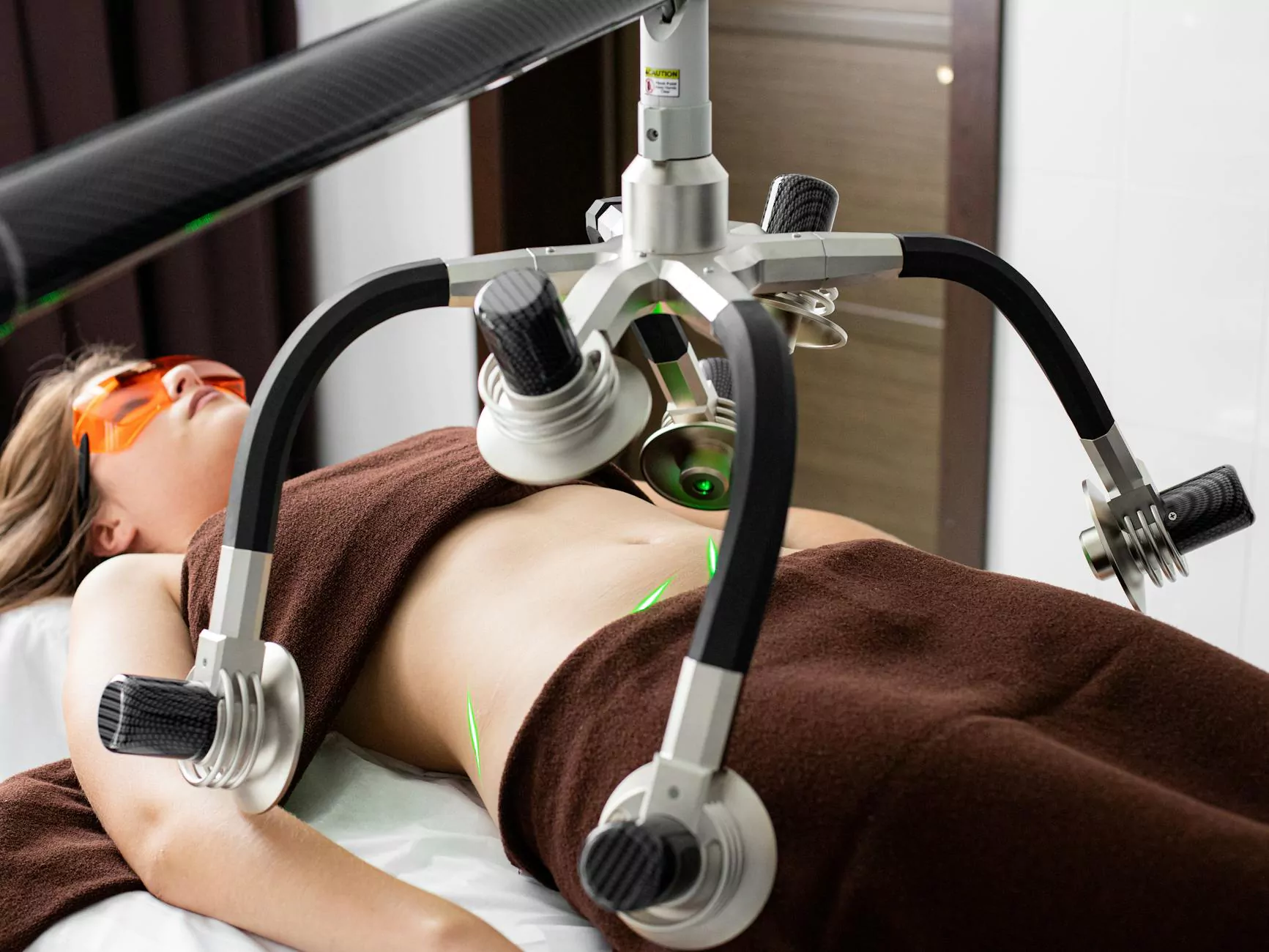Understanding Shoulder Abduction and External Rotation: A Comprehensive Guide for Health & Medical Professionals

Within the realm of musculoskeletal health, particularly in the fields of Health & Medical, Education, and Chiropractors, a profound understanding of shoulder biomechanics is essential. Among the critical movements of the shoulder, shoulder abduction and external rotation stand out due to their complexity, clinical significance, and impact on patient mobility. This extensive article explores these movements from anatomical, biomechanical, clinical, and rehabilitative perspectives, providing valuable insights for practitioners aiming to excel in patient care and health education.
Anatomical Foundations of Shoulder Movements
The shoulder joint, or glenohumeral joint, is a highly mobile ball-and-socket joint that facilitates a broad range of motion. To fully grasp shoulder abduction and external rotation, an in-depth knowledge of the bone structures, muscles, ligaments, and nerves involved is crucial.
Key Structures Involved
- Humerus: The upper arm bone that forms the ball of the glenohumeral joint.
- Glenoid Fossa: The shallow socket on the scapula where the humeral head articulates.
- Scapula: The shoulder blade providing attachment points for muscles and stabilizing the joint.
- Rotator Cuff Muscles: A group of four muscles (supraspinatus, infraspinatus, teres minor, subscapularis) essential for shoulder movement and stability.
- Deltoid Muscle: The primary mover of shoulder abduction, especially after the initial 15-degree lift.
- Ligaments and Capsule: Structures like the glenohumeral ligament complex support joint stability.
Muscular Mechanics of Shoulder Abduction and External Rotation
Understanding how muscles coordinate during these movements is vital for diagnosing injuries and developing rehabilitation strategies. During shoulder abduction, the deltoid and supraspinatus muscles work synergistically to lift the arm away from the body, engaging a complex sequence of neuromuscular activation. External rotation primarily involves the infraspinatus and teres minor muscles pulling the humeral head externally around the axis of the shoulder joint.
Biomechanics of Shoulder Abduction and External Rotation
Biomechanics plays a pivotal role in understanding how forces are distributed and how movement efficiency is achieved. The movements of shoulder abduction and external rotation involve complex joint kinematics that demand precise muscular coordination and joint stability.
Phases of Shoulder Abduction
- Initial Phase (0-15 degrees): Primarily assisted by the supraspinatus muscle; stabilization by the rotator cuff.
- Mid-phase (15-90 degrees): Deltoid takes the lead, elevating the arm with the rotator cuff maintaining humeral head centering.
- Final Phase (>90 degrees): Scapulothoracic motion (upward rotation of the scapula) complements shoulder abduction to achieve full elevation.
The Mechanics of External Rotation
External rotation involves the lateral movement of the arm in the transverse plane. This motion is facilitated by the infraspinatus, teres minor, and posterior deltoid, which rotate the humeral head posteriorly. The stability of the glenohumeral joint during external rotation is maintained through ligamentous support and the rotator cuff muscles, ensuring precise movement without joint dislocation or impingement.
Clinical Significance of Shoulder Abduction and External Rotation
Understanding these movements' biomechanical and anatomical complexity is not merely academic; it has profound clinical implications. Injuries, degenerative changes, or dysfunctions involving these motions can drastically impair shoulder functionality and overall quality of life.
Common Conditions Affecting Shoulder Movement
- Rotator Cuff Tears: Tears of the rotator cuff tendons impair external rotation and abduction, leading to weakness and pain.
- Impingement Syndromes: Pinching of soft tissues during elevation (abduction) which can restrict movement and cause inflammation.
- Frozen Shoulder (Adhesive Capsulitis): Limits both abduction and external rotation due to capsular tightening.
- Dislocations and Instability: Anterior dislocations often impair external rotation and abduction, requiring tailored rehabilitation.
Rehabilitation and Therapy Interventions
Rehabilitation programs emphasize restoring shoulder abduction and external rotation through targeted exercises, manual therapy, and neuromuscular re-education. Proper assessment and personalized protocols are essential for successful recovery and injury prevention.
Enhanced Techniques for Training and Education on Shoulder Movements
For healthcare providers and educators, conveying the intricacies of these movements involves innovative teaching strategies, including biomechanical modeling, visual aids, and hands-on demonstrations. Emphasizing the importance of proper form and muscular engagement can reduce injury risk and improve functional outcomes.
Educational Tools and Resources
- Interactive 3D models illustrating shoulder biomechanics.
- High-definition videos demonstrating correct abduction and external rotation exercises.
- Case studies highlighting common pathologies and rehabilitation strategies.
- Continued professional development programs focusing on orthopedics and musculoskeletal health.
The Role of Chiropractors in Managing Shoulder Function
Chiropractic care plays a significant role in diagnosing, treating, and preventing shoulder dysfunctions, particularly those related to shoulder abduction and external rotation. Spinal adjustments, soft tissue therapies, and movement correction techniques contribute to restoring optimal biomechanics, reducing pain, and enhancing overall mobility.
Chiropractic Approaches to Shoulder Rehabilitation
- Manual Adjustments: Correcting spinal misalignments that influence shoulder mechanics.
- Soft Tissue Therapy: Addressing muscle tightness and fascial restrictions that limit movement.
- Functional Movement Assessments: Identifying compensatory patterns detrimental to shoulder health.
- Exercise Prescription: Developing customized stretching and strengthening routines that emphasize safe shoulder abduction and external rotation.
Future Directions in Shoulder Movement Research and Business Innovation
The ongoing evolution of biomedical research and technological advancements opens new horizons for improving outcomes related to shoulder abduction and external rotation. The integration of wearable sensors, virtual reality, and AI-based diagnostics promises to revolutionize education, treatment, and preventative care in this domain.
Businesses like iaom-us.com are at the forefront of this innovation, offering evidence-based resources, training modules, and certifications tailored for healthcare professionals committed to excellence in musculoskeletal health. Such platforms foster continuous learning and promote best practices in diagnosing and rehabilitating shoulder conditions.
Conclusion: Mastering Shoulder abduction and external rotation for Better Health Outcomes
Perfecting the understanding of shoulder abduction and external rotation is fundamental for clinicians, chiropractors, educators, and students aiming to deliver superior patient care and advance the field of musculoskeletal health. By integrating detailed anatomical knowledge, biomechanical insights, clinical applications, and innovative educational tools, healthcare professionals can enhance diagnostic accuracy, optimize rehabilitation programs, and ultimately improve quality of life for their patients.
Continual research and technological progress hold the promise of even more effective interventions in the future, making mastery over these complex shoulder movements essential for excellence in health and medical practice.









